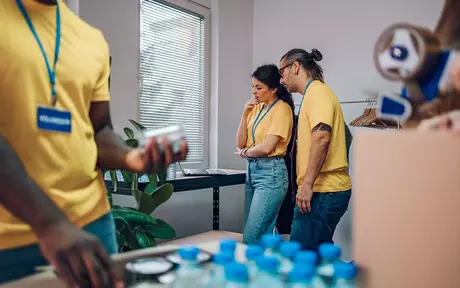
What are the challenges of remote working for nonprofits?
Remote working is a big technological shift for any organization, but it's also a cultural one for many nonprofits. With people at home and in the field, the challenge is managing the impact across the organization and what that means for delivering on missions.
Remote working's cultural impact
Unit4's transition to working from home was relatively simple due to the culture we already had in place. For the nonprofits we've spoken to, remote working was often more challenging but not always for the reasons they expected. Where they had more mature cloud-based back-office solutions in place, the practical shift was relatively straightforward. However, for these organizations, the biggest challenge was a cultural one.
For these nonprofits working from home was rare. The change was less about capability and more about culture and mindset. They had the tools to manage many aspects of their day-to-day work in the cloud, so workload didn't change for many people, but the way they work did.
There was initially a feeling that the change would be only short-term. So some organizations, instead of approaching the issue head-on, decided to delay it. Putting major projects, meetings, or decisions on hold. But the critical community work nonprofits do needs to continue and can't be kept on hold forever.
As one customer put it, their staff eventually realized, “oh no, we just need to move forward with this virtually.”
So the realization that the nonprofit world would for the foreseeable future be a virtual one was the most challenging part of this new reality. And to deal with this, the focus shifted to encouraging collaboration, engagement, and communication internally. And the tools their people used would be vital to making this happen.
Technical troubleshooting
Supply and demand was a big issue in the beginning. As everyone scrambled to work from home, things like laptops were suddenly in short supply. Or in some areas where nonprofits have to operate, internet connection outside of offices was not reliable.
Sometimes, even when an organization was technically set up to work remotely, many weren't prepared to do it because people rarely used the capability previously. So suddenly, the issue wasn't if people could work remotely but how and using what tools.
Many people had to learn how to work remotely on a steep curve. Understanding how to login to systems remotely, change passwords, and so on. Although virtual meetings were perhaps the most obvious, talked-about – and we now know, potentially exhausting - change, the most significant transformation was the change in day-to-day work modality to a completely remote environment where people spend most of their time.
Financial planning & scenario planning
In an ever-evolving situation, what does this mean for planning and forecasting?
The impact was huge. For a significant period, many organizations moved away from mid- to long-term planning. It was too difficult to manage the many uncontrollable external factors while keeping a firm handle on the impacts of cash flow fluctuations.
Meaning many nonprofits needed to shift focus almost week by week and sometimes daily as the situation unfolded. They needed to build much more flexible scenarios and business models to accommodate wild variations in income and service demand.
For nonprofits with well-established cloud infrastructures, this was possible due to the cloud's real-time capabilities. Meaning they could immediately understand what was happening across the organization and make strategic decisions using accurate and reliable data.
Another issue for financial planning was revenue. With donations and membership funding impacted, many organizations had to try and figure out new models for sustainability. Creating new funding plans, connecting with new sources of additional funding, and doing all this virtually.
One positive outcome was many organizations found, surprisingly, that their funding levels were not as negatively impacted as they feared. Some remained the same, which speaks volumes about the importance of their work and their supporters
Nonprofit remote working, the real story
Get a personal picture of how the pandemic has impacted nonprofits in our recent roundtable. Where we talk to Jennifer Mulch, Controller at Missouri Botanical Gardens, and Julian McGovern, Chief Information Officer at Save the Children International, to hear about the challenges they've faced in 2020 – as well as their learnings and some silver linings. You can watch the full discussion by clicking below.





